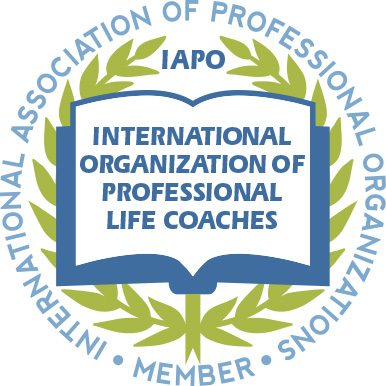Having a professional development plan is vital if you wish to continue to grow, advance in your career and stay competitive in today’s ever-evolving job market. Despite its importance, many professionals find it challenging to create a practical plan for professional development that works for them. And with such a wide variety of opportunities available, it can be overwhelming to identify the best options. Today, we explore the best ways to identify and prioritize professional development opportunities that align with your goals and aspirations and help you to achieve your full potential.
How to Create a Professional Development Plan
The first step in developing a professional development plan is to complete a skills assessment to help pinpoint areas where you need to improve and areas where you already excel.
Create a list of skills, knowledge and competency areas, and then rate your proficiency in each category.
Consider both hard skills and soft skills, as both are essential for career success.
Be honest with yourself about your current skills and knowledge.
Note your strengths and weaknesses and focus on areas where you need to improve.
Identifying which areas require development will make it easier to target only enriching opportunities that are in line with your career objectives.
If you need help creating your skills inventory, there are many online resources available to help you.
Goal Setting
Before diving into professional development plan opportunities, take time to clearly define your career goals and needs.
Review your self-assessment and determine the skills, knowledge, and experiences you want to acquire or enhance.
What skills do you need to develop to advance in your career? What professional achievements would you like to attain?
Write down your specific career objectives.
Consider the skills, knowledge, and experience required for those objectives. Break down your goals into smaller, achievable milestones.
Make sure that your professional development goals are SMART, meaning Specific, Measurable, Achievable, Relevant, and Time-bound.
SMART goals foster accountability and allow you better evaluate your progress so that you remain on track towards achieving your objectives.
After listing your goals, consider prioritizing them by placing the most valuable and pressing goals at the top of the list.
Prioritizing allows you to focus on what’s most important, saving you time and ensuring that you won’t be overwhelmed.
Get More Resources to Create Your Own Professional Development Plan
Identify Resources and Opportunities
Identify the resources and professional development opportunities available to you.
Do thorough research on professional development tools such as conferences, workshops, classes, seminars, in-person or online courses, mentorship, and coaching activities that your employer may offer or is willing to sponsor.

If you’re stumped about how to get started, consider these suggestions:
- The internet is a treasure trove of professional development opportunities waiting to be discovered. Websites like LinkedIn Learning, Coursera, Udemy, and edX offer a wide range of online courses. Additionally, professional organizations and industry-specific websites often provide resources, webinars, and conferences that can boost your skills and knowledge.
- Many employers offer professional development programs to their employees as part of their benefits package. Check with your HR department to learn about any available opportunities, such as in-house training, tuition reimbursement, leadership development programs, or certifications. Taking advantage of these programs can benefit both you and your employer.
- Attending industry conferences, workshops, and seminars is an excellent way to immerse yourself in your field and expand your professional network. These events often feature keynote speakers, hands-on sessions, and networking opportunities that can provide valuable insights and connections for your career development.
When researching professional development opportunities, be sure to consider factors such as cost, time commitment, relevance to your goals, and potential for advancement.
Evaluate each opportunity carefully to ensure it aligns with your career trajectory and offers tangible benefits.
Read More About How to Create Your Own Professional Development Plan
Create a Schedule and Budget
Once you have identified professional development opportunities that you would like to prioritize, create a timeline for completing each one. Develop smaller, more achievable goals or milestones along the way. Completing small goals helps keep you motivated and serves as a guideline to track your progress.
Professional development opportunities often require some investment, so it’s wise to create a budget for various opportunities you want to pursue.
Determine the costs of each opportunity in terms of both time and money, and how it fits into your career development goals and overall budget.
Finding time to focus on professional development can be a challenge. These additional resources may be useful:
Easy to Implement Time Management Strategies for Everyone
Best Productivity Hacks for an Amazing Year
How to Delegate at Work to Avoid or Overcome Burnout
Build Your Professional Network
Networking is a powerful soft skill that helps you to discover professional development opportunities.
Connect with colleagues, mentors, and industry professionals to gain insights into valuable courses, workshops, seminars, and events.
Networking can also lead to mentorship opportunities or recommendations for programs that are not widely advertised.
Mentorship can be a valuable resource in identifying professional development opportunities.
A mentor can provide guidance, advice, and recommendations tailored to your specific career goals. They may suggest professional development activities that align with your aspirations.
How to Create Your Own Professional Development Plan
Developing a professional development plan is a proactive step towards achieving your career goals and maximizing your potential.
Investing in yourself is an investment in your future.
Once your goals are set, develop a system to track your progress regularly. Create a journal or spreadsheet to document the progress of each objective. This helps you to recognize moments of improvement and progress and identify where you need to double down your efforts.
Be ready to adapt and revise your plan if necessary.
Flexibility is essential if any of your objectives have changed, or you have accomplished them. Update and revise your goals regularly to keep you motivated and focused.
A well-planned professional development plan can help you keep your skills up to date and accelerate your progress towards your career goals.
By following these steps, you will be better equipped to create a plan tailored to your unique objectives and identify opportunities to develop both existing and new proficiencies.
Are you wondering if it’s time for a bigger change? Check out:
Is It Time for a New Job? 9 Sure Signs
Thank you as always for reading.
If you haven’t yet subscribed, please visit KindCompassCoach and enter your email address so you never miss a post.
As Amazon Associates, we may earn a small commission (at no cost to you) for purchases made from links in this post.

Joan Senio is the founder of KindCompassCoach. Joan’s career includes clinical healthcare plus 20+ years as an executive in a nationwide health care system and 15 years as a consultant. The common threads throughout Joan’s personal and professional life are a commitment to non-profit organizations, mental health, compassionate coaching, professional development and servant leadership. Joan has had the privilege of mentoring early and mid-career professionals as well as current and future executives and leaders. She is a member of the International Organization of Life Coaches, serves as a thought-leader for KuelLife.com and is also a regular contributor to PsychReg and Sixty and Me. You can read more about Joan here: Joan Senio.




No Responses